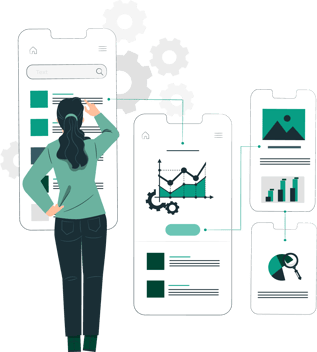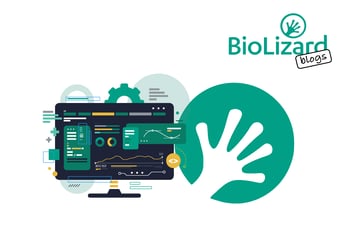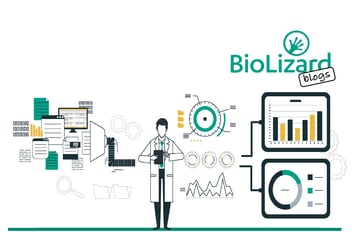Flutter: A programming language to build multi-platform applications
Have you ever stared at a word, knowing it’s not quite the right one to express yourself, but not sure what would be better? Choosing a programming language can be like finding the right word – although many words will do ok, there is that single turn of phrase that can best capture exactly what you want to communicate. Here at BioLizard, we like to act as your thesaurus, by advising you on exactly which programming language is the best option to capture all of the information that your data can communicate. Earlier in this three-part series on new programming languages, we covered Rust and Julia, two languages that can both be highly effective when applied correctly to data analysis problems. Today, we’re turning to something a little different: a programming language that was created to build user interfaces.
If you are developing a solution for non-technical users, such as a patient population, they will most likely interact with your software through a user interface. User interfaces, or “UI”s, come in a variety of screen sizes and can be loaded onto different devices such as web browsers, mobile devices or desktop applications.
 Flutter is a fast, straightforward, and open-source UI software development kit that was launched by Google in 2018. Similar to Rust, Flutter is “platform agnostic”: it is able to natively compile across different platforms, including Android, iOS, and even web browsers. As a UI software development kit, this means that Flutter quickly transforms code that is readable to humans into a user interface, without a lot of in-between and behind-the-scenes steps.
Flutter is a fast, straightforward, and open-source UI software development kit that was launched by Google in 2018. Similar to Rust, Flutter is “platform agnostic”: it is able to natively compile across different platforms, including Android, iOS, and even web browsers. As a UI software development kit, this means that Flutter quickly transforms code that is readable to humans into a user interface, without a lot of in-between and behind-the-scenes steps.
Alongside React, Flutter helped start the trend in declarative UI frameworks. Declarative programming helps developers build apps in less time and with less code, by allowing them to simply tell the system what to do, without needing to map out every step that must be taken to get there. Put simply, when using Flutter, the programmer just describes what the UI should look like – and then it’s Flutter’s job to figure out how to make it so.
Flutter is a fast, straightforward, and open-source UI software development kit that was launched by Google in 2018. Similar to Rust, Flutter is “platform agnostic”: it is able to natively compile across different platforms, including Android, iOS, and even web browsers. As a UI software development kit, this means that Flutter quickly transforms code that is readable to humans into a user interface, without a lot of in-between and behind-the-scenes steps.
Alongside React, Flutter helped start the trend in declarative UI frameworks. Declarative programming helps developers build apps in less time and with less code, by allowing them to simply tell the system what to do, without needing to map out every step that must be taken to get there. Put simply, when using Flutter, the programmer just describes what the UI should look like – and then it’s Flutter’s job to figure out how to make it so.
Building an app in Flutter is also very straightforward thanks to a lot of ready-to-use widgets, and its “hot reload” feature, which allows you to view applied changes almost instantly, making it much quicker to fine-tune sequential iterations of the UI.
Flutter’s rich ecosystem includes a vibrant developer community, a package manager that provides access to ready-to-use open-source packages, and excellent documentation. Google, the birthplace of Flutter, also communicates openly with developers via the @fluttercomm Twitter account. The combination of Flutter’s platform agnosticism, speed, and vibrant community leads us to believe that Flutter isn’t going away any time soon.
Flutter, Rust, and Julia are all powerful tools when skillfully applied to data analysis or user interface challenges – and BioLizard is here to help with that skilful application. The diverse team at BioLizard is able to not only understand the scientific questions that you want to answer but also have the hands-on experience and theoretical background in programming to make sure that your data analysis pipeline is robust. If you’re looking for an A-to-Z partner for constructing an efficient and effective scientific data collection, management, storage, analytics, and reporting programme, you’ve come to the right place.
Let’s discuss your data needs…
Trust the data professionals!
Resources





